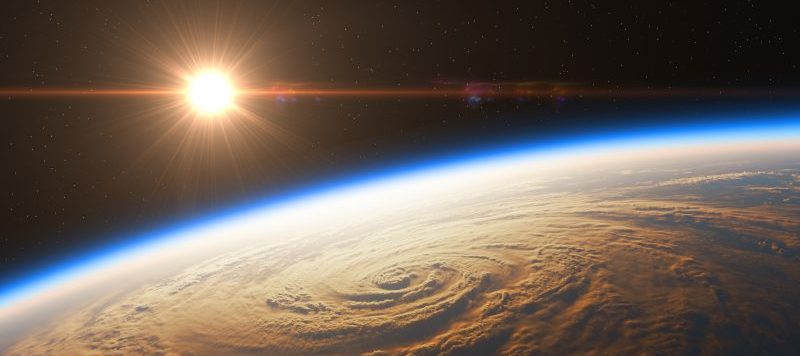For most of the year, weather may be the subject of small talk and not much else. But when natural disasters rear their ugly heads, its conversational status rises and the meteorologists who can explain or predict it suddenly become the most sought-after personalities on television. And the service provided by these meteorologists and other scientists goes beyond simply providing information to a curious public; they are also the first line of defense when it comes to helping communities and disaster-response units prepare for hurricanes, flash floods, and everything in between.
Perhaps the most important service meteorologists can provide is accurate forecasting, and a great deal of the information required for this comes from weather satellites. Tim Schmit, a Satellite Research Meteorologist with the National Oceanic and Atmospheric Administration (NOAA) and finalist in the Science and Environment category of the 2018 SAMMIES, has been instrumental in upgrading the capabilities of these satellites and in communicating with local stakeholders to ensure that the maximum benefit is derived from this new technology.
The SAMMIES are an esteemed awards program sponsored by the Partnership for Public Service that recognizes remarkable work done by career federal employees. Last week, Christopher Dorobek, host of the DorobekINSIDER, spoke with Schmit about the evolution of weather satellites and the role they can play in providing vital information to both the public and private sector.
Schmit’s current position is the culmination of a long-standing interest in meteorology; in his words, “It all started in 7thgrade. I decided that I would like to get a master’s degree in Meteorology from the University Wisconsin Madison. Fast forward, and that’s what happened.”
One of the things that attracted Schmit to the public sector was the scope of resources available. “The power of the government is that we can do big things,” he said. “I don’t know what one company could have this kind of a reach.”
The reach Schmit refers to is certainly very broad; NOAA is both the workhorse of weather prediction and data gathering, and on the cutting edge of exciting new technologies. “NOAA’s the background of really all weather forecasts,” he says, “the backbone of putting up satellites and operating them, and our model is to give away all the data for free, so then people can use it and add value.”
The satellites themselves are miracles of technology and scientific engineering; aside from transmitting pictures, they can monitor things like fog, sea temperature, smoke from wildfires, and even conditions in space. In terms of their contributions to forecasting, Schmit says, “The real untold story is how much better we’re doing now than just 10 or 15 years ago.”
Schmit works with two types of satellites: those that circle around the planet, and those that rotate at the same speed as earth and so can be used to focus on a particular geographic area over an extended period of time. These are called Geostationary Operational Environmental Satellites (GOES), and they can be vital in providing information to state officials and first responders, especially as the data they transmit is nearly real time.
“With this rapid scan you know you’re looking at something that happened literally one minute ago,” says Schmit. He gives the example of a test in Oklahoma, where the satellite could be used to detect wildfires whose location would then be given to the state Forest Service before anyone on the ground had even reported them.
Schmit is also optimistic about the potential of the government to work cooperatively with the private sector and with academia, given the successful partnerships he has already seen. One of the points he makes is that different organizations can provide unique expertise and capabilities, and that the sum of these parts can construct the most effective system for protecting lives and property. Schmit gives the examples of instruments built by the private sector with input and oversight from NOAA and NASA, or privately-built spacecraft launched by the Air Force, often with complex calculations and scientific measurements provided by academic institutions.
Severe weather and natural disasters have long threatened to make chaos out of order, but as the technology available to predict and mitigate their impact grows more advanced, so society grows more secure. Tim Schmit’s role in driving this innovation make him a deserving SAMMIES finalist and exceptional public servant, one to whom anyone who has ever benefited from advanced storm warnings or even just mundane weather forecasts owes a debt of gratitude.





Leave a Reply
You must be logged in to post a comment.